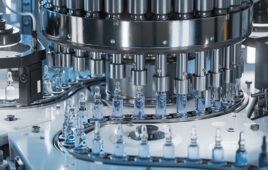
[Adobe Stock]
Life-altering potential
Despite the stunning costs, these treatments can be life-altering. For instance, Hemgenix, indicated for hemophilia B, reduces bleeding substantially and eliminates the need for ongoing therapy in most patients. Three years following treatment, 94% of patients did not need continuous prophylactic treatment, which involves regular infusions of clotting factor concentrates.
Similarly, a recent trial update found that a single dose of the hemophilia A therapy Roctavian was effective for more than seven years, cutting annual bleeding rates in patients with severe hemophilia A by 96% in one cohort. In addition, Zolgensma provides sustained efficacy in treating spinal muscular atrophy, with maintained or new motor milestones achieved up to 7.5 years post-dosing. Similarly, Abecma showed a 72% overall response rate and 93% minimal residual disease negativity in heavily pretreated multiple myeloma patients. Kymriah achieved an 81.3% best overall response rate in pediatric and young adult patients with relapsed/refractory B-cell acute lymphoblastic leukemia.
Serious adverse events and long-term monitoring
Although generally well-tolerated, some cell and gene therapies are associated with severe side effects. For example, CAR T-cell therapies like Kymriah and Yescarta have been associated with cytokine release syndrome and neurologic toxicities. Gene therapies such as Zolgensma have been linked to acute liver injury or failure, necessitating the administration of systemic corticosteroids pre- and post-infusion.
Expanding indications and approvals
Regulatory wins for cell and gene therapies are mounting, resulting in steadily more indications and use in new markets. For instance, Kymriah recently received FDA approval for the treatment of adult patients with relapsed or refractory follicular lymphoma, marking its third approved indication. Similarly, Yescarta has won approval for a manufacturing process change that reduces the median turnaround time for the treatment, and its updated prescribing information now includes overall survival data from the phase 3 ZUMA-7 study.
Cell and gene therapy costs pose complex payer calculus
Still, the high price tag of cell and gene therapies is undeniable. A recent report in Nature using gene therapies approved as of December 2020 and those in late-stage clinical trials concluded the annual cost of cell and gene therapies averaged $20.4 billion per year. The report projected that annual spending would increase to $25.3 billion in 2026, before declining to $21.0 billion in 2034.
While some cell and gene therapies such as BREYANZI, a CD19-directed CAR T cell therapy, have won support from some payers, that hasn’t always been the case. In the early days of CAR-T therapies, hospitals often faced financial losses owing to fixed payment bundles from Medicare and Medicaid that fell significantly short of the therapy’s cost. Consequently, some hospitals limited patient intake or referred Medicare patients elsewhere. Additionally, gene therapies also present a challenge since patients often change insurers frequently. Overall though, the trend toward payer support is building. In addition, manufacturers frequently have programs to assist with the financial aspects of such therapies, including providing free medicines for qualifying individuals.
A wide range for cell and gene therapy costs
The following chart illustrates the prices of a range of treatments in this class ranging from $65,000 to $4.25 million:
Cost-effectiveness considerations
While many therapies offer significant clinical benefits, their cost-effectiveness remains a concern. The Institute for Clinical and Economic Review (ICER) has conducted analyses on several products, often recommending lower prices to meet commonly accepted cost-effectiveness thresholds. For instance, ICER suggested a price benchmark of $2.9 million for Hemgenix (actual cost is $3,5 million), considering potential cost offsets, and a range of $1.1 to $2.1 million for Zolgensma (actual cost is $2.125 million). Its actual cost is $3.5 million. In the case of CAR T-cell therapies, ICER acknowledged their substantial clinical improvements while highlighting the uncertainties surrounding their long-term efficacy. In addition, ICER deemed Zynteglo (for beta-thalassemia) cost-effective at its $2.1 million price, assuming an outcomes-based agreement. Its actual cost is $2.8 million.
Yescarta as an example of cost-effectiveness challenges in cell and gene therapy
Similarly, Yescarta (for relapsed/refractory large B-cell lymphoma) had an ICER of $93,547 per quality-adjusted life-year (QALY) compared to standard care, with certain assumptions about long-term survival rates. Its actual cost is $373,000. In the ZUMA-5 trial of Yescarta in patients with relapsed/refractory follicular lymphoma, the Kaplan-Meier survival probability at 36 months was 75.5%.
Assuming a five-year event-free survival rate of 35% with second-line Yescarta and 10% with standard of care, Yescarta was cost effective at a willingness to pay ratio of $150,000 per QALY, as DrugTopics summarized. Yet Yescarta was no longer cost-effective if its 5-year event-free survival was less than or equal to 26.4% or if it cost more than $972, 061 at a willingness-to-pay threshold of $150,000.
Factors influencing the long-term value of cell and gene therapies
Potential wild-cards for the broader cell and gene therapy lanscape include the durability of treatment effects, the specific patient population, and the availability of alternative therapies significantly influence cost-effectiveness calculations. Zolgensma’s cost-effectiveness hinges on assumptions about long-term benefits, while assumptions about the proportion of patients achieving long-term remission with Yescarta are equally critical. The evolving nature of these therapies, limited long-term data, and the emergence of potential competitors could make assessing their long-term value an ongoing challenge.
Ultimately, whether cell and gene therapies can deliver on their clinical promise while justifying their frequently high costs will become clearer in the coming years as more long-term data become available. The durability of treatment benefits remains a critical consideration; a frequent argument for the therapy class is that one-time therapies with lifelong effects are far more cost-effective than those requiring repeat administration. The size of the treatable patient population is another important dimension, with ultra-rare disease therapies facing a steeper challenge in recouping development costs than treatments for more prevalent conditions. Finally, the availability of alternative treatments, even if less effective, can raise the cost-effectiveness bar for new gene therapies. Organizations like ICER have an influential role in these evaluations, often advocating for lower price points to meet accepted cost-effectiveness thresholds.
The following table highlights some of the most notable FDA-approved cell and gene therapies in recent years. (The full FDA list is available here.)
| Drug Name | Type | Indication | Efficacy | Price (USD) | Approval Regions | FDA Approval Year |
|---|---|---|---|---|---|---|
| BEQVEZ | Gene therapy | Hemophilia B | Significant reduction in annualized bleeding rate compared to pre-treatment period | To be announced | U.S. | 2024 |
| ZOLGENSMA | Gene therapy | Spinal muscular atrophy | Sustained efficacy up to 7.5 years | $2,125,000 | U.S., EU, Japan | 2019 |
| KYMRIAH | CAR T-cell therapy | B-cell ALL, certain lymphoma types | 81.3% best overall response in pediatric ALL, 52% overall response rate in DLBCL | $373,000 | U.S. and EU | 2017 |
| YESCARTA | CAR T-cell therapy | Large B-cell lymphoma | 83% overall response rate, 58% complete response in refractory LBCL | $373,000 | U.S. and EU | 2017 |
| LUXTURNA | Gene therapy | Inherited retinal dystrophy | Significant improvement in sight and quality of life | $425,000 | U.S. and EU | 2017 |
| TECARTUS | CAR T-cell therapy | Mantle cell lymphoma, B-ALL | 87% overall response rate, 62% complete response in relapsed/refractory mantle cell lymphoma | $373,000 | U.S. and EU | 2020 |
| BREYANZI | CAR T-cell therapy | LBCL, CLL, SLL | 73% overall response rate, 54% complete response in relapsed/refractory LBCL | $410,300 | U.S., Europe, Canada, Japan | 2021 |
| ABECMA | CAR T-cell therapy | Multiple myeloma | 72% overall response rate, 93% minimal residual disease negativity in ≥VGPR | $419,500 | U.S., EU, and Japan | 2021 |
| CARVYKTI | CAR T-cell therapy | Multiple myeloma | 98% overall response rate, 80% stringent complete response in heavily pretreated multiple myeloma | $465,000 | U.S., Europe, and Japan | 2022 |
| HEMGENIX | Gene therapy | Hemophilia B | 64% reduction in mean annual bleeding rate | $3,500,000 | U.S., EU, Canada | 2022 |
| ZYNTEGLO | Gene therapy | Beta-thalassemia | High rates of transfusion independence | $2,800,000 | U.S. and EU | 2022 |
| LIBMELDY | Gene therapy | Metachromatic leukodystrophy | Significant reduction in risk of severe motor impairment or death | $4,250,000 | U.S. and EU | 2024 |
| SKYSONA | Gene therapy | Cerebral adrenoleukodystrophy | Early expression of transgene with ALDP expression in CD14+ cells | $3,000,000 | U.S. | 2022 |
| ROCTAVIAN | Gene therapy | Hemophilia A | 96% reduction in annual bleeding rates in severe hemophilia A patients | $2,900,000 | U.S. and EU | 2023 |
| VYJUVEK | Gene therapy | Dystrophic epidermolysis bullosa | 65% of treated wounds achieved complete healing at 6 months | $25,545 per dose* | U.S. | 2023 |
*Lifetime cost of Vyjuvek could be as high as $15-$22 million per patient.
Filed Under: Cell & gene therapy




Tell Us What You Think!
You must be logged in to post a comment.